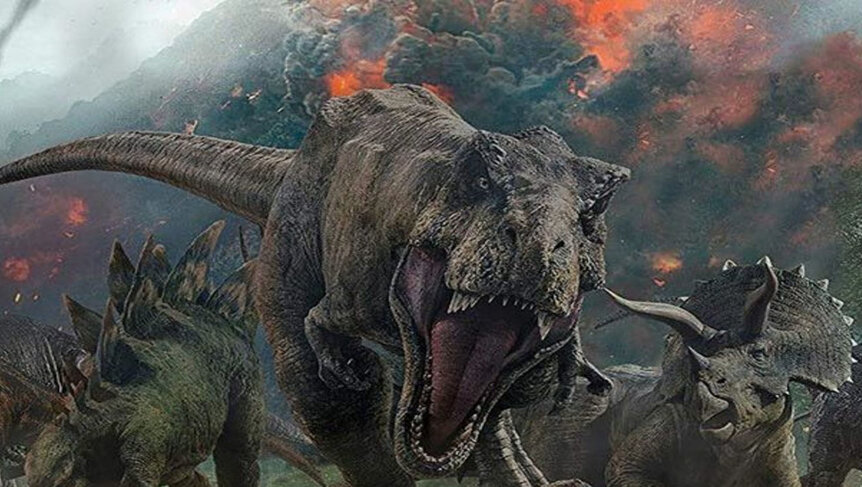Create a free profile to get unlimited access to exclusive videos, sweepstakes, and more!
The Search for Alien Life Should Focus on Jurassic Worlds in Space, Study Finds
Bring on the space dinosaurs!
John Hammond was obsessed with seeing living dinosaurs with his own eyes. That pursuit led him and the company he founded to create Jurassic Park and later Jurassic World (streaming now on Peacock). It’s unlikely that we’ll ever succeed in resurrecting real live dinosaurs, but we might be able to find Jurassic worlds elsewhere in the cosmos.
When it comes to planets harboring life, we have an incredibly small sample size of one. Earth is the only place we know of with life on it, so when we look for life in other places, we tend to look for familiar stuff. That means looking for Earth-like life on Earth-like worlds, but what does that really mean?
RELATED: Astrobiologist Suggests We May Have Found and Killed Martian life 50 Years Ago
Our planet and the life on it is not a static system, but is instead in a constant state of flux. In the same way that an adult is not the same person they were as a teenager or a child, our planet has been many worlds throughout time, hosting various atmospheres and various forms of life, each of which broadcast a distinct light signature into deep space. When searching for life on other planets, we might have the best odds hunting down "Jurassic worlds," according to a new study published in The Monthly Notices of the Royal Astronomical Society.
If We Ever Find Aliens, They're Likely to be Jurassic
The Mesozoic era, often referred to as the era of dinosaurs, ran from about 250 million years ago until 66 million years ago when it was abruptly ended by an incoming asteroid. During parts of the Mesozoic, plants got a little overeager and pumped the atmosphere full of oxygen. And all of that O2 would have made the Earth more easily visible to any alien astronomers.
To see just how much of a difference atmospheric changes would have made, scientists simulated the light signature of the Earth over the last 500 million years, broken up into 100-million-year periods. They found that if aliens were looking for signs of life on Earth, they would have gotten the best indication between 100 and 300 million years ago when oxygen concentrations were the highest.
“Modern Earth’s light fingerprint has been our template for identifying potentially habitable planets, but there was a time when this fingerprint was even more pronounced – better at showing signs of life,” said Lisa Kaltenegger, co-author of the study, in a statement. “This gives us hope that it might be just a little bit easier to find signs of life – even large, complex life – elsewhere in the cosmos.”
RELATED: Was 1947's UFO Incident at Roswell Simply the Result of a Secret Balloon Experiment?
As life – particularly plants – proliferated across the planet, they changed the composition of the atmosphere and the planet’s corresponding light signature. If complex life exists out there on other worlds, then it should change its planet’s atmosphere in similar ways. The worlds which will stick out the most might be the worlds crammed full of oxygen and capable of supporting life on the scale of Earth’s dinosaurian era.
“Hopefully we’ll find some planets that happen to have more oxygen than Earth right now, because that will make the search for life just a little bit easier,” Kaltenegger said. “And who knows, maybe there are other dinosaurs waiting to be found.”
In the meantime, you can find a Jurassic World right here on Earth, streaming now on Peacock.































